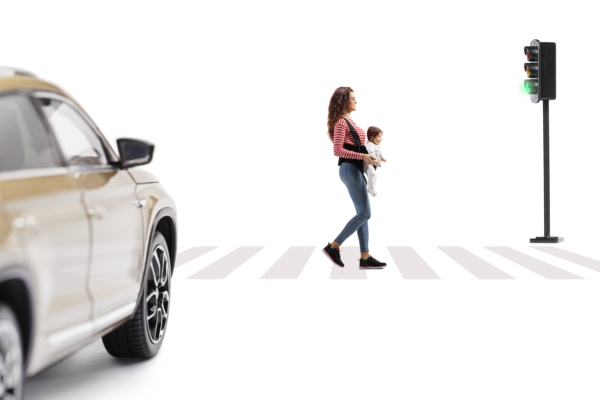As SUVs and pickup trucks continue to grow in size, the U.S. government’s road safety agency hopes the automotive industry will design new vehicles that can reduce incidents of pedestrian deaths and injuries.
The National Highway Traffic Safety Administration (NHTSA) in the United States is proposing a new regulation to set testing and performance requirements aimed at reducing the risk of head injuries to pedestrians. This new regulation will cover all passenger cars weighing no more than 10,000 pounds, with a primary focus on large SUVs and pickup trucks, whose sizes and hood heights have been increasing over the years, creating blind spots for drivers.
According to the NHTSA, pedestrian fatalities increased by 57% from 2013 to 2022, rising from 4,779 to 7,522. The agency estimates that this rule could save 67 lives each year.
Data shows that nearly half of pedestrian deaths occur due to being struck by the front of vehicles, with SUVs and trucks being the most common vehicles in such incidents.
As per proposed provisions required by the Bipartisan Infrastructure Law, which was mandated by Congress, the new regulation will establish testing procedures simulating head impacts, and mandate the reduction of head injury risks. NHTSA has stated in a prepared statement that child and adult dummy models will be used during the tests.
Sophie Shulman, Deputy Director of NHTSA, emphasized in the statement, “We are facing a road safety crisis, made worse for vulnerable road users like pedestrians. This proposed rule will ensure that vehicle designs protect occupants inside and outside the vehicle from serious injuries or death.”
The Bipartisan Infrastructure Law demands that NHTSA align U.S. regulations with global pedestrian safety standards, focusing specifically on vehicles manufactured for the U.S. market.
According to data from Motorintelligence.com, as of August, all sizes of SUVs and trucks accounted for nearly 79% of new vehicle sales in the United States.
Last year, a study by the Insurance Institute for Highway Safety found that vehicles with higher and more vertical hoods increase the risk to pedestrians. The insurance research organization discovered that the likelihood of a pedestrian dying in a vehicle collision is about 45% higher in trucks, SUVs, and vans with engine hood heights exceeding 40 inches compared to vehicles with hood heights of 30 inches or less and a more sloped design.
The authors of the study also questioned whether the wide pillars supporting the roofs of large vehicles make it more difficult for drivers to spot pedestrians approaching the corners of their vehicles.
Consumer Reports magazine found in 2021 that higher vehicle hood heights can obstruct drivers’ visibility, potentially causing them to overlook pedestrians crossing in front of their vehicles.
Consumer Reports website revealed that since 2000, the hood height of pickup trucks has increased by 11%. For example, in 2017, the Ford F-250 heavy-duty pickup truck had an engine hood height of 55 inches from the ground, equivalent to the roof height of some cars.
Consumer Reports conducted visibility tests on 15 new vehicles, including full-size trucks. Due to the height and long front hoods of these trucks, the results showed that the blind spots in the front of some trucks were up to 11 feet longer than certain sedans and seven feet longer than many popular SUVs.
Car manufacturers and the public will have 60 days to provide feedback on the proposal before NHTSA finalizes the regulations.

